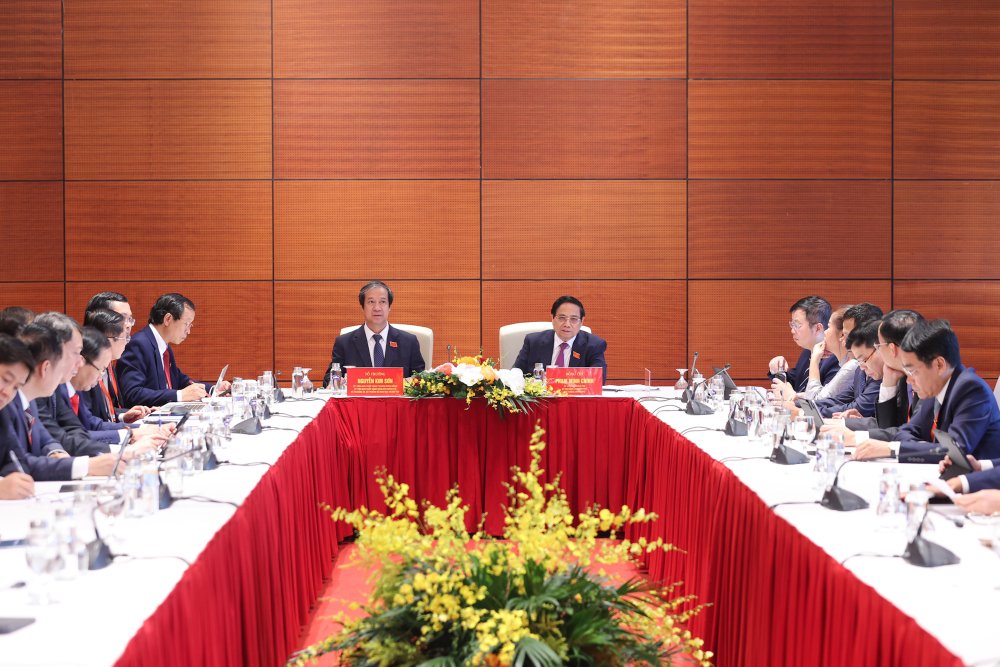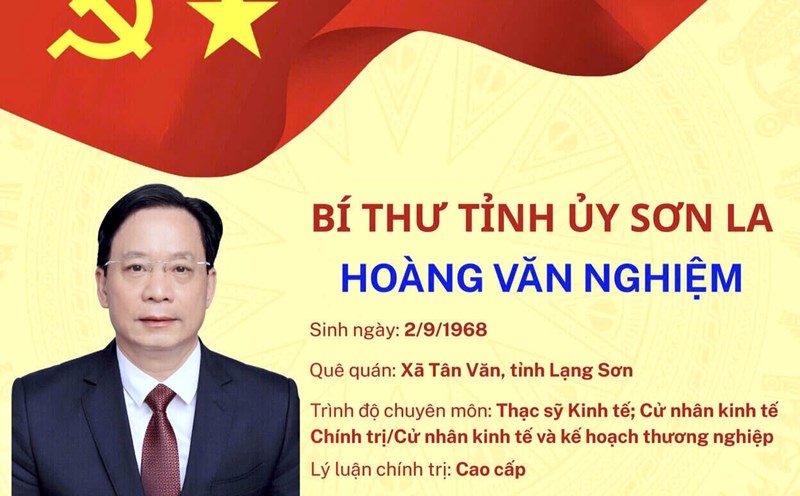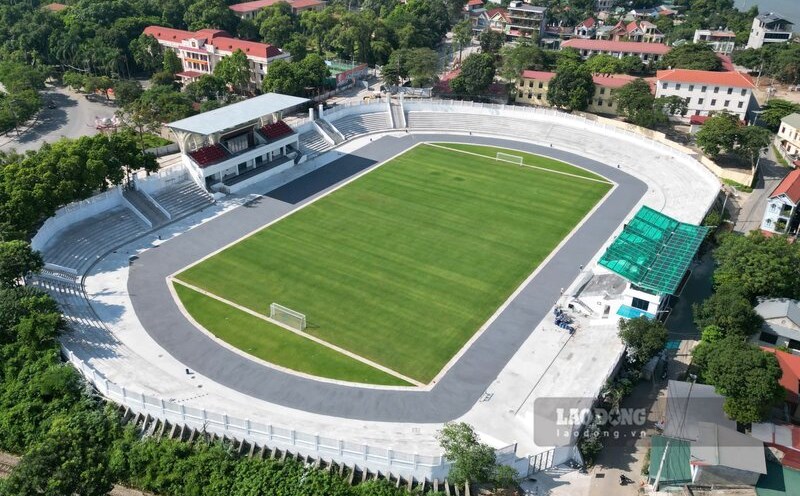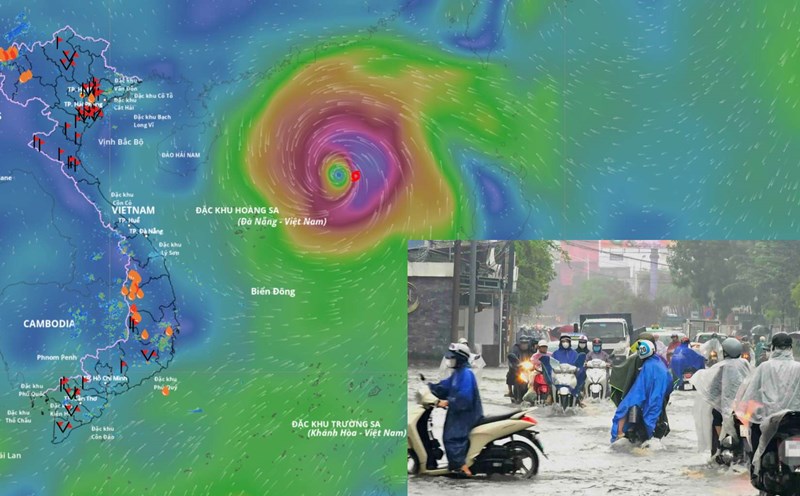On the afternoon of October 12, at the National Convention Center (Hanoi), after a rote session in the morning, the 1st Government Party Congress, term 2025-2030, held an afternoon session.
In the working session on the afternoon of October 12, the Congress organized 15 groups to discuss the draft documents of the Congress and the draft documents to be submitted to the 14th National Party Congress.
Prime Minister Pham Minh Chinh attended the No. 1 discussion group, including 33 delegates from 3 delegations: Party Committee of the Ministry of Education and Training; Party Committee of Vietnam Television; Party Committee of Vietnam National Industry - Energy Group.
Speaking at the first discussion in group and suggesting some contents for delegates to comment on the draft documents, Politburo member and Prime Minister Pham Minh Chinh stated that the draft documents submitted to the 14th National Party Congress were drafted with many new points, in a concise and more substantial direction, focusing on major points, action, efficiency, and high feasibility.
The Prime Minister emphasized that if we do not continue to innovate, we will not be able to develop, we cannot "go far to the ocean, go deep underground, fly high into the universe". Therefore, we must innovate and make stronger breakthroughs, in which science and technology, innovation and digital transformation are the foundation for development, the shortest and fastest path.
"We need to develop thinking, methodology, and approaches to solve practical problems that need to be innovated," said the Prime Minister.
The Prime Minister mentioned the slogan "Innovation is good or death" at the time of the 6th Congress and said that this means that we must overcome ourselves, overcome our own limits, to be innovative and to develop.
The Prime Minister asked delegates to give their opinions on the contents of the document in a consistent and feasible manner so that we can continue to strongly innovate and make breakthroughs in development, especially in the mechanism of ensuring resources and mobilizing resources.
The Prime Minister reiterated that President Ho Chi Minh had a very scientific and effective way of mobilizing resources among the people in the context of "the scale hanging on the hair" when he first founded the country.

Analyzing more deeply the issue of resource mobilization, the Prime Minister affirmed that it is necessary to continue to remove institutional difficulties and obstacles to unblock, mobilize resources, and turn institutions from bottlenecks into national competitive advantages.
The Prime Minister reviewed some very impressive figures for this term such as the total increase in state budget revenue and expenditure savings of about 1.57 million billion VND; total social security expenditure of about 1.1 million billion VND; public debt decreased from 44.3% of GDP in 2020 to about 35% in 2025; total social investment capital reached 17.3 million billion VND, equivalent to 33.2% of GDP, total public investment capital in the 5-year period was 3.4 million billion VND, an increase of 55% compared to the 2016-2020 term...
According to the Prime Minister, attracting FDI capital is a bright spot, but the resources in society are still very large. The important thing is to know how to mobilize total social investment more strongly, through synchronous and effective measures, such as removing institutional obstacles; developing financial markets, stock markets, developing international financial centers, free trade centers... To do so, the mechanism must be very open, creating favorable conditions for investors, but at the same time protecting independence, sovereignty, and territorial integrity.
Another important measure mentioned by the Prime Minister is to boldly assign private enterprises to participate in investing and constructing large-scale infrastructure projects such as international-scale sports facilities, capable of serving the Olympics, or international airports...
In reality, the private sector will do these projects faster, more modernly and at more cost-effective costs, while not having to use the state budget.











